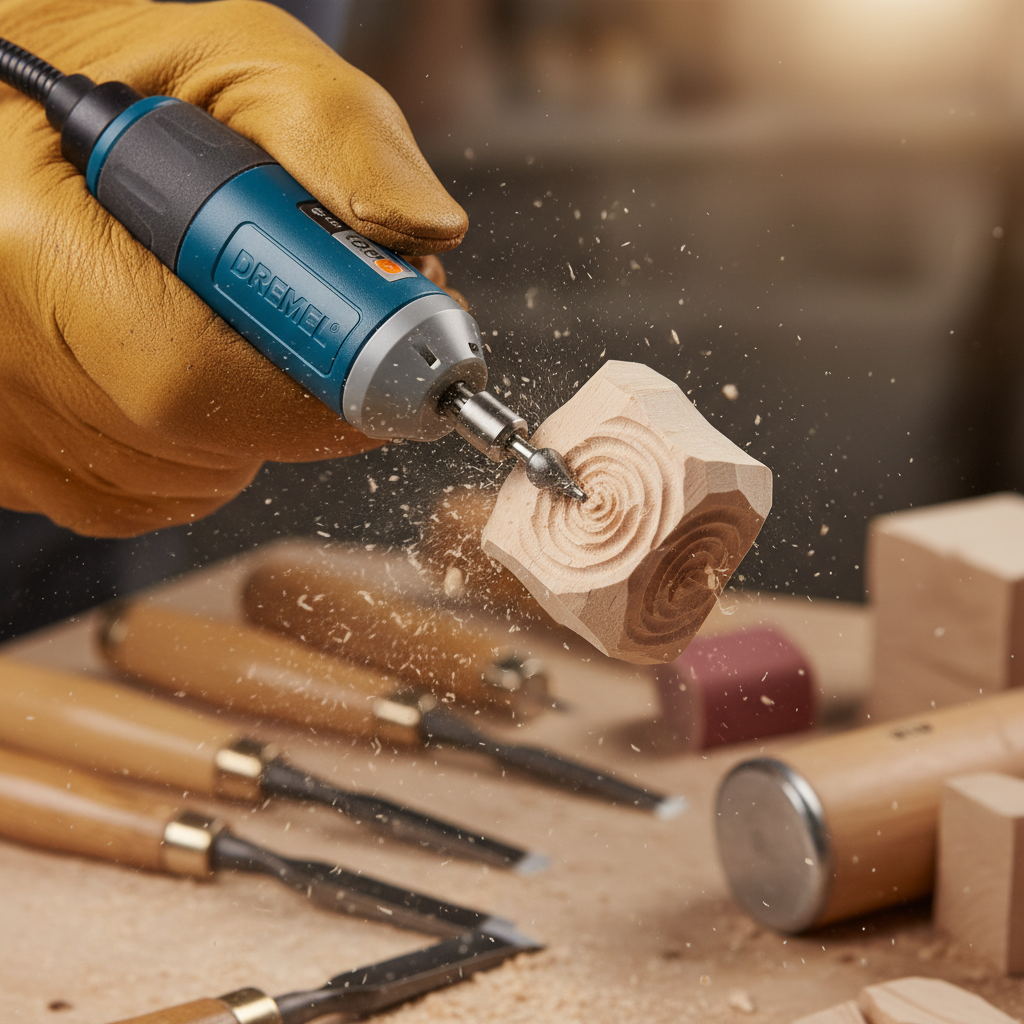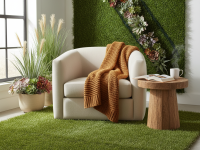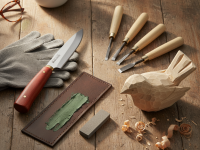Hey fellow crafters and DIY enthusiasts! Are you like me, someone who loves working with wood but perhaps felt a bit intimidated by traditional carving tools? Or maybe you already own a Dremel and are wondering just how far you can push its capabilities? Well, you’ve come to the right place!
I still remember the first time I picked up my Dremel with the intention of carving wood. It felt like a simple rotary tool, great for sanding or cutting small things, but *carving*? Could it really handle the intricate work I envisioned? Spoiler alert: it absolutely can! But here’s the kicker – it’s not just the Dremel itself; it’s the magical world of accessories that truly transforms it into a wood carving powerhouse. Through trial and error, a fair bit of dust, and a few “aha!” moments, I’ve discovered the indispensable tools that make wood carving with a Dremel not just possible, but incredibly rewarding.
So, grab a cup of coffee, put on your safety glasses (metaphorically for now, literally later!), and let me share my journey and the must-have Dremel accessories that will unlock your wood carving potential. Trust me, you’ll wonder how you ever carved without them!
Why Dremel for Wood Carving?
Before we dive into the accessories, let’s quickly chat about why a Dremel is such a fantastic tool for wood carving, especially for begiers or those with limited space. Its high-speed rotation allows for smooth, controlled cuts with minimal effort. It’s incredibly versatile, lightweight, and offers precision that traditional hand tools sometimes struggle with on a smaller scale. Plus, if you already own one, you’re halfway there!
The Game-Changers: Essential Dremel Wood Carving Accessories
1. Carbide Burrs: Your Go-To for Shaping and Detailing
If there’s one category of accessory you absolutely MUST invest in, it’s carbide burrs. These are the workhorses of wood carving with a Dremel. Made from tungsten carbide, they are incredibly durable and maintain their sharpness far longer than high-speed steel cutters. I remember initially buying a cheap set of steel bits, only to have them dull quickly on anything harder than balsa wood. Switching to carbide was a game-changer.
- Ball Burrs: Excellent for hollowing out areas, creating concave shapes, or adding texture. I use them extensively for shaping rounder forms.
- Flame Burrs: Perfect for creating details, undercutting, and shaping organic lines. They give you a lot of control for intricate work.
- Cylinder/Straight Burrs: Great for flattening surfaces, carving straight lines, or defining edges.
- Cone/Tapered Burrs: Ideal for fine detailing, reaching into tight spaces, and creating V-cuts.
My advice? Start with a small set that includes a variety of these shapes and different sizes. You’ll quickly discover your favorites for different tasks.
2. High-Speed Cutters: For Softer Woods and Broad Strokes
While carbide burrs are king for detail and durability, high-speed steel cutters still have their place, especially if you’re working with softer woods like basswood, balsa, or pine. They come in similar shapes to carbide burrs but are generally less aggressive. I often use them for initial roughing out of larger shapes before switching to carbide for refinement. They are more affordable, making them a good option for practicing without breaking the bank. Just be mindful that they dull faster, so have replacements handy.
3. Sanding Bands and Discs: Smoothing Out Your Masterpiece
Carving doesn’t end with cutting; smoothing and refining are crucial. Dremel’s sanding bands and discs are indispensable for this. They come in various grits, allowing you to gradually work your way from coarse to super-fine, removing tool marks and shaping contours.
- Sanding Bands (with Mandrel): These are cylindrical and great for ier curves, hollowing, and general smoothing. I often start with a 60 or 120 grit to remove initial marks, then move to 240 or higher.
- Sanding Discs: Excellent for flatter surfaces, edges, and outer curves. The flexibility of some disc types allows them to conform to contours better.
One tip I learned: Don’t press too hard! Let the abrasive do the work. Excessive pressure generates heat, which can burn the wood and wear out your sanding accessories faster.
4. Diamond Wheel Points: When Hardness is Key
If you ever venture into carving harder woods, stone, or even glass, diamond wheel points become incredibly useful. While not strictly wood-carving specific, they can be excellent for intricate details on very dense woods where even carbide struggles. They are slow and require a very light touch, but their ability to remove material from tough surfaces is unmatched. I don’t use them daily for wood, but they’re a lifesaver for specific, hard-to-carve projects.
5. Flex Shaft Attachment: Comfort and Control Reinvented
This is, without a doubt, the most significant comfort upgrade for any Dremel user doing intricate work. The flex shaft attaches to your Dremel (which you can then hang or clamp) and provides a lightweight, pen-like handpiece. My wrist and hand used to ache after long carving sessions holding the Dremel directly. The flex shaft made those problems disappear. The improved dexterity and reduced hand fatigue allow for much finer detail and longer carving sessions. It felt like I suddenly had professional-grade control. If you plan on spending more than an hour or two carving at a time, GET ONE!
6. Chucks and Collets: The Foundation of Stability
This might seem basic, but using the correct chuck or collet for your chosen bit size is critical. A loose bit is not only dangerous but also leads to inaccurate cuts and excessive vibration. Dremel offers different sized collets, and for ultimate versatility, I highly recommend their 3-jaw keyless chuck. It allows you to quickly change bits of varying shank sizes without needing to swap collets constantly. This small upgrade saves so much time and frustration.
My Personal Carving Journey & Essential Tips
When I first started, I made all the classic begier mistakes. Here are a few things I learned the hard way that might help you avoid some frustration:
- Start Simple, Start Soft: Don’t try to carve an intricate sculpture from oak on your first go. Basswood is your best friend – it’s soft, has very little grain, and is forgiving. Balsa is even softer for pure practice.
- Safety First, Always: I can’t stress this enough. Eye protection is non-negotiable. Fine wood dust can be irritating, so a dust mask is highly recommended. Also, consider gloves if you’re holding smaller pieces of wood.
- Practice on Scrap Wood: Before touching your ‘masterpiece’ wood, test your bits and techniques on a scrap piece. This helps you understand how different bits interact with the wood and prevents costly mistakes on your main project.
- Light Touches, Multiple Passes: Resist the urge to press hard and try to remove a lot of material at once. The Dremel is designed for high-speed, light passes. This gives you more control, reduces the risk of errors, and prevents overheating your bits and the wood.
- Work with the Grain (Mostly): Understand the wood grain. Carving against it can lead to tear-out. However, Dremels, due to their speed, can sometimes handle cross-grain work better than hand tools, but still proceed with caution.
- Good Lighting is Key: Shadows can hide details and lead to mistakes. Invest in a good, adjustable task light.
- Clean Your Bits: Wood resin and dust can build up on your bits, making them less effective. A wire brush or bit cleaning solution can restore their cutting power.
Beyond the Basics: Expanding Your Toolkit
Once you’re comfortable with the essentials, you might consider other Dremel attachments like the Dremel Workstation (turns your Dremel into a drill press for precise drilling or a router for edge work) or the Router Attachment (great for shaping edges or cutting dados). While not strictly carving accessories, they expand your Dremel’s capabilities for related woodworking tasks that often complement carving projects.
Conclusion: Your Carving Adventure Awaits!
So there you have it – my tried-and-true guide to Dremel wood carving accessories. From the absolute necessity of quality carbide burrs to the comfort-enhancing flex shaft, these tools have transformed my wood carving experience. What started as a hesitant experiment has blossomed into a deeply satisfying hobby, all thanks to understanding how to best equip my trusty Dremel.
Don’t be afraid to experiment, try different bits, and most importantly, have fun with it! The world of wood carving with a Dremel is incredibly accessible and rewarding. With the right accessories and a little patience, you’ll be creating beautiful, intricate pieces io time. Happy carving!




